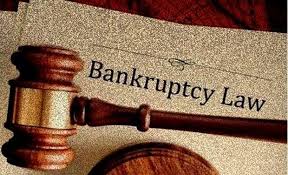
The government on Tuesday expanded the scope of the new insolvency rules to bring individual businesses under its purview.
On Tuesday, the Insolvency and Bankruptcy Board of India (IBBI) published the draft rules dealing with insolvency resolution process of individuals and firms on its website (www.ibbi.gov.in) ; public comments can be submitted till 31 October.
Once notified, even individual businesses such as proprietorships will come under the bankruptcy regime. This will enable an orderly bankruptcy resolution within the purview of a transparent rules-based regime. The existing insolvency and bankruptcy code, at present, applies only to corporate defaulters.
“These rules shall apply to matters relating to the insolvency resolution process for individuals and firms under Part III of the code,” said the draft rules issued by IBBI.
Part III of the Insolvency and Bankruptcy Code, 2016, deals with insolvency and bankruptcy of individuals and partnership firms.
According to a statement issued by IBBI on Tuesday, the draft rules and regulations have been submitted by a working group which was formed to recommend the strategy and approach for implementation of the provisions of the Insolvency and Bankruptcy Code, 2016, dealing with insolvency and bankruptcy in respect of guarantors to corporate debtors, i.e., personal guarantors, and individuals having businesses.
“So far, the rules were only in respect of the Corporate Insolvency Resolution Process (CIRP) and the rules concerning individuals and partnership firms were yet to come,” said Satwinder Singh, partner at Vaish Associates, a law firm. “The jurisdiction for corporate, companies, limited liability partnership (LLP) lies before the National Company Law Tribunal (NCLT) and with the Debt Recovery Tribunal (DRT) for individuals and firms. The provisions relating to insolvency and bankruptcy of individuals and firms had not been notified earlier, so now the IBBI has come out with the draft rules.”
Harsh Pais, partner at law firm Trilegal, said, “It is a positive step towards consolidating the bankruptcy regime for individuals, for whom there was no systematic approach previously. For companies, at least there was recourse to the Companies Act, whereas for individuals there were only some archaic laws from the early 1900s, which were hardly relied upon in practice.”
Most of the small and medium enterprises (SMEs) take the legal form of either partnership or proprietorship firms. Though the loans are smaller in value, SME borrowers far outnumber companies, resulting in their borrowings exerting a significant influence in the financial sector’s stability.
Bankruptcy resolution is high on the agenda of the central government, which is keen to improve the ease of doing business in India and attract more private investments from domestic and overseas sources. An efficient exit route from failed projects is an essential factor that lenders consider before participating in projects.
Source: Live Mint
